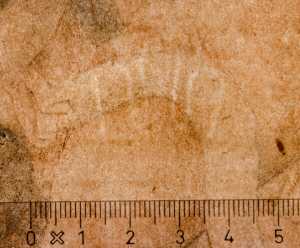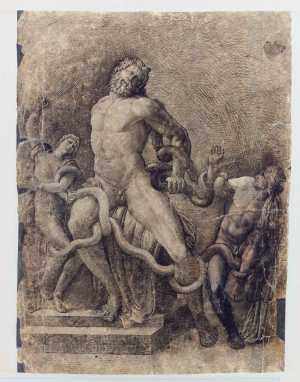Specifications
| Title | Laocoön |
|---|---|
| Material and technique | Black chalk, pen and brown ink, heightened with white (partly oxidised) |
| Object type |
Drawing
> Two-dimensional object
> Art object
|
| Location | This object is in storage |
| Dimensions |
Height 396 mm Width 298 mm |
|---|---|
| Artists |
Artist:
Anoniem
Previously attributed: Marco Dente |
| Accession number | DN 111/8 (PK) |
| Credits | Gift Dr A.J. Domela Nieuwenhuis, 1923 |
| Department | Drawings & Prints |
| Acquisition date | 1923 |
| Creation date | in circa 1506-1511 |
| Watermark | Drieberg (26 x 20 mm, l.m.o. on P? of?P, vH), somewhat similar to Briquet 11654 and 11661 (resp. Vicenza 1449, Neurenberg 1487; Bologna 1507-10) [see image] |
| Inscriptions | 'C 117' (on old top sheet, red chalk?) |
| Collector | Collector / Adriaan Domela Nieuwenhuis |
| Mark | G. Vallardi (L.1223, L.1223a, no. C 117), A.J. Domela Nieuwenhuis (L.356b) |
| Provenance | Giuseppe Vallardi (1784-1863, L.1223/1223a)**, art dealer, Milan, his no. C 117; - ; Dr. Adriaan J. Domela Nieuwenhuis (1850-1935, L.356b), Munich/Rotterdam, donated with his collection in 1923 (Marco Dente) |
| Exhibitions | Rotterdam 1997-98; Sydney 1999 |
| Internal exhibitions |
Rondom Raphaël (1997) |
| Research |
Show research Italian Drawings 1400-1600 |
| Material | |
| Object | |
| Technique |
Highlight
> Painting technique
> Technique
> Material and technique
|
| Geographical origin | Italy > Southern Europe > Europe |
Do you have corrections or additional information about this work? Please, send us a message

























